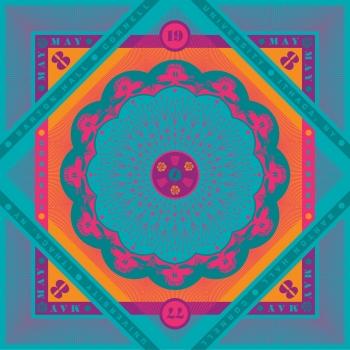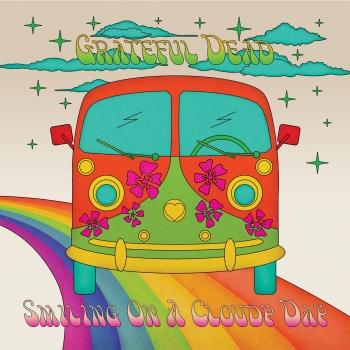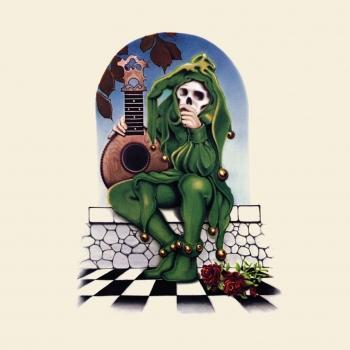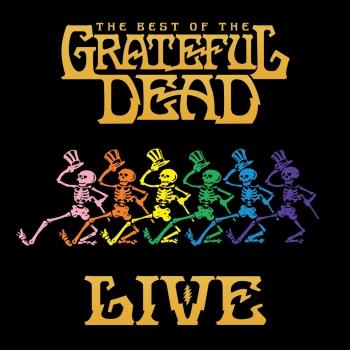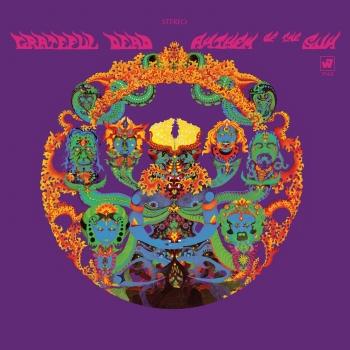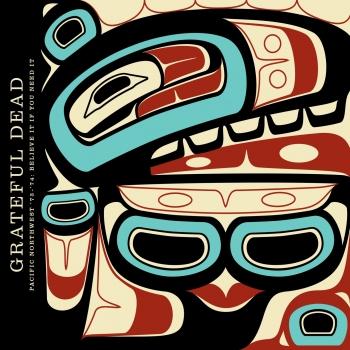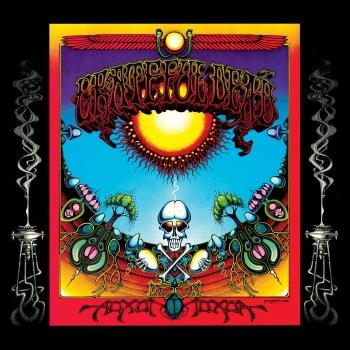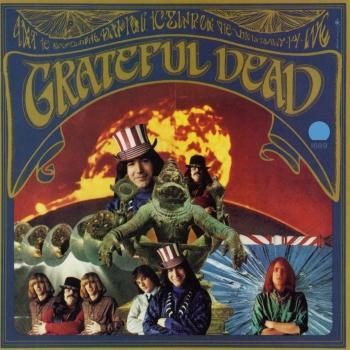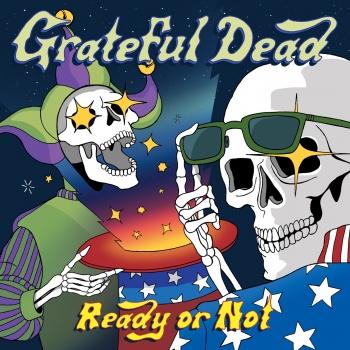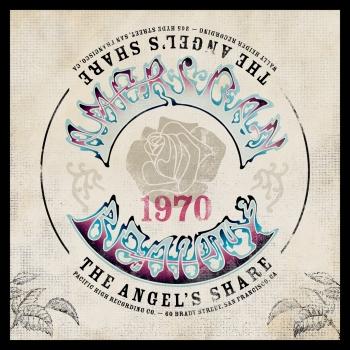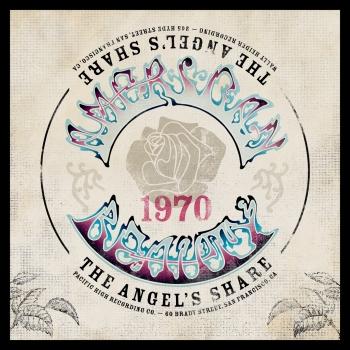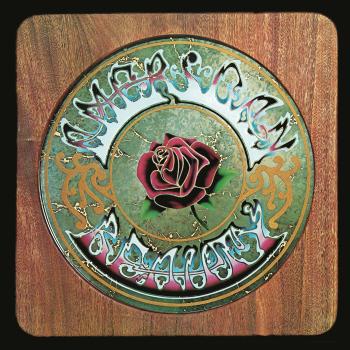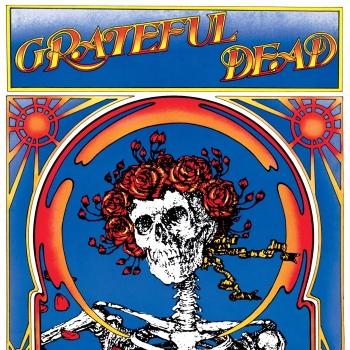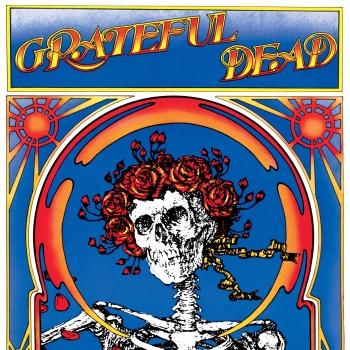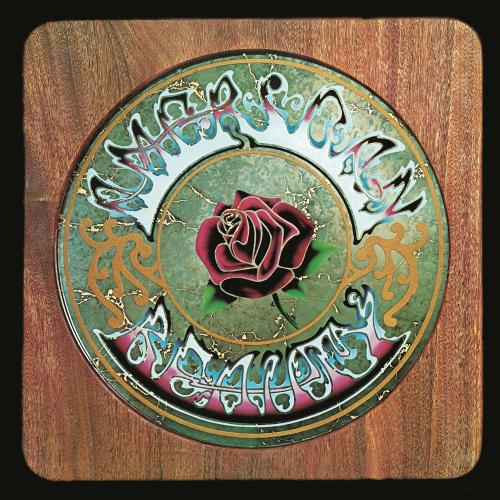
American Beauty (50th Anniversary Deluxe Edition) (Remastered) Grateful Dead
Album info
Album-Release:
2020
HRA-Release:
30.10.2020
Album including Album cover
I`m sorry!
Dear HIGHRESAUDIO Visitor,
due to territorial constraints and also different releases dates in each country you currently can`t purchase this album. We are updating our release dates twice a week. So, please feel free to check from time-to-time, if the album is available for your country.
We suggest, that you bookmark the album and use our Short List function.
Thank you for your understanding and patience.
Yours sincerely, HIGHRESAUDIO
- 1 Box of Rain (2020 Remaster) (192 kHz) 05:17
- 2 Friend Of The Devil (2020 Remaster) (192 kHz) 03:23
- 3 Sugar Magnolia (2020 Remaster) (192 kHz) 03:19
- 4 Operator (2020 Remaster) (192 kHz) 02:23
- 5 Candyman (2020 Remaster) (192 kHz) 06:14
- 6 Ripple (2020 Remaster) (192 kHz) 04:08
- 7 Brokedown Palace (2020 Remaster) (192 kHz) 04:09
- 8 Till The Morning Comes (2020 Remaster) (192 kHz) 03:07
- 9 Attics Of My Life (2020 Remaster) (192 kHz) 05:13
- 10 Truckin' (2020 Remaster) (192 kHz) 05:06
- 11 Bertha (Live at the Capitol Theatre, Port Chester, NY, 2/18/71) 06:20
- 12 Truckin' (Live at the Capitol Theatre, Port Chester, NY, 2/18/71) 09:14
- 13 Hurts Me Too (Live at the Capitol Theatre, Port Chester, NY, 2/18/71) 05:56
- 14 Loser (Live at the Capitol Theatre, Port Chester, NY, 2/18/71) 06:55
- 15 Greatest Story Ever Told (Live at the Capitol Theatre, Port Chester, NY, 2/18/71) 03:48
- 16 Johnny B. Goode (Live at the Capitol Theatre, Port Chester, NY, 2/18/71) 03:08
- 17 Mama Tried (Live at the Capitol Theatre, Port Chester, NY, 2/18/71) 03:22
- 18 Hard To Handle (Live at the Capitol Theatre, Port Chester, NY, 2/18/71) 09:14
- 19 Dark Star, Pt. 1 (Live at the Capitol Theatre, Port Chester, NY, 2/18/71) 07:03
- 20 Wharf Rat (Live at the Capitol Theatre, Port Chester, NY, 2/18/71) 07:24
- 21 Dark Star, Pt. 2 (Live at the Capitol Theatre, Port Chester, NY, 2/18/71) 07:21
- 22 Me And My Uncle (Live at the Capitol Theatre, Port Chester, NY, 2/18/71) 04:13
- 23 Casey Jones (Live at the Capitol Theatre, Port Chester, NY, 2/18/71) 07:38
- 24 Playing In The Band (Live at the Capitol Theatre, Port Chester, NY, 2/18/71) 06:11
- 25 Me And Bobby McGee (Live at the Capitol Theatre, Port Chester, NY, 2/18/71) 06:35
- 26 Candyman (Live at the Capitol Theatre, Port Chester, NY, 2/18/71) 07:59
- 27 Big Boss Man (Live at the Capitol Theatre, Port Chester, NY, 2/18/71) 05:42
- 28 Sugar Magnolia (Live at the Capitol Theatre, Port Chester, NY, 2/18/71) 07:12
- 29 St. Stephen (Live at the Capitol Theatre, Port Chester, NY, 2/18/71) 06:26
- 30 Not Fade Away, Pt. 1 (Live at the Capitol Theatre, Port Chester, NY, 2/18/71) 04:31
- 31 Goin' Down The Road Feeling Bad (Live at the Capitol Theatre, Port Chester, NY, 2/18/71) 05:03
- 32 Not Fade Away, Pt. 2 (Live at the Capitol Theatre, Port Chester, NY, 2/18/71) 04:00
- 33 Uncle John's Band (Live at the Capitol Theatre, Port Chester, NY, 2/18/71) 06:39
Info for American Beauty (50th Anniversary Deluxe Edition) (Remastered)
By any measure, 1970 was a high-water mark for the Grateful Dead. Hot on the heels of the incredible success of Workingman’s Dead that summer, the band returned in the fall with the equally stunning American Beauty. Those back-to-back classics not only introduced songs that would be a key part of the group’s live repertoire for decades, but they also opened a gateway into the world of the Grateful Dead for generations of Dead Heads. American Beauty will celebrate its 50th anniversary this year with two new releases.
AMERICAN BEAUTY: 50th ANNIVERSARY DELUXE EDITION will be available on October 30. This three-album set includes the original album with newly remastered audio, plus an unreleased concert recorded on February 18, 1971 at the Capitol Theatre in Port Chester, NY. The show was mixed from the 16-track analog master tapes by Jeffrey Norman at Bob Weir’s Marin County TRI Studios and mastered by Grammy® Award-winning engineer, David Glasser. One of the highlights from the Capitol Theatre show, the previously unreleased performance of “Truckin’” is available today on all digital download and streaming services.
Jerry Garcia, Bob Weir, Ron “Pigpen” McKernan, Phil Lesh, Bill Kreutzmann and Mickey Hart recorded American Beauty in August and September 1970 at Wally Heider Studios in San Francisco with producer Stephen Quinn Barncard. When they entered the studio, Workingman’s Dead was still on the charts going strong. Such a quick follow-up on studio albums was unheard of for the band, and a feat they would never repeat. Equally shocking was the high level of craftsmanship exhibited by new songs like, “Friend Of The Devil,” “Sugar Magnolia,” “Truckin’,” and “Ripple.” Today, it’s still considered to be one of the greatest albums ever made.
“It still boggles my mind to think of the Grateful Dead's creative output in 1970. For any other band, catching lightning with an album as perfect and excellent as Workingman's Dead is a once-in-a-lifetime achievement. The Dead, however, followed up just a few months later with an album that virtually every Dead Head considers its equal. Ten songs, nearly all of which became cornerstones of the band's live repertoire for the next 25 years. Today, 50 years on, these songs are still essential parts of the band members' continuing live activities,” says David Lemieux, Grateful Dead archivist and the set’s producer. “The 50th Anniversary Deluxe Edition includes one of the first, and best, live performances of 1971, just a couple of months after the release of American Beauty, and the five live debuts in the show demonstrate that the spectacular creativity of 1970 was no fluke. This was the new Dead, and we're still tapping our feet and humming along to these songs 50 years later.”
AMERICAN BEAUTY: 50th ANNIVERSARY DELUXE EDITION includes the band’s previously unreleased live performance from February 18, 1971 at the Capitol Theatre, one of the most requested archival recordings in the Dead’s vault.
On stage that night, the Dead debuted a whole new batch of songs, five in all: “Wharf Rat,” “Playing In The Band,” “Bertha,” “Greatest Story Ever Told” and “Loser.” Fans were also treated to a few standbys from the previous decade, including “St. Stephen” and an inspired “Dark Star” jam that led into “Wharf Rat” and back to “Dark Star.” Notably, keyboardist Ned Lagin (who played piano on “Candyman” on American Beauty) sat in with the band for the show.
In the set’s liner notes, So Many Roads author David Browne recounts the history surrounding the album and dives deep into the making of this masterpiece. He writes: “American Beauty was, at heart, a beautifully made record. The interplay of rippling piano, vocal harmonies, and slide guitar in ‘Brokedown Palace’ was unlike anything they had created before, even on Workingman’s Dead. Thanks to Barncard’s expertise with recording acoustic instruments, ‘Ripple,’ perhaps [Robert] Hunter and Garcia’s most meditative song, had a country-stream clarity. ‘Friend Of The Devil’—a Hunter, Garcia, and John “Marmaduke” Dawson tale of an on-the-run rogue that almost ended up with Dawson’s New Riders Of The Purple Sage—had the same crispiness. (Both tracks also benefited from overdubbed mandolin parts from David Grisman.)”
An exclusive line of American Beauty merchandise also launched today at dead.net including a Levi’s vintage trucker jacket, sterling silver ring, vintage matchstick tin, crew sweatshirt, and a numbered, limited edition print by Liane Plant.
Grateful Dead
Digitally remastered
From the 1960s until the 1995 death of guitarist, singer-songwriter Jerry Garcia, the Grateful Dead played roughly 2,300 long, freeform concerts that touched down on their own country-, blues and folk –tinged songs, and on a similarly wide range of cover versions. Along the way, they popularized the concept of the jam band, influencing thousands of songwriters and basement improvisers and earning themselves maybe the most loyal fans a rock band have ever had.
Nearly as famous as the band itself were its legions of "Deadheads" — predominantly white men who have lovingly preserved the era that spawned the Dead by emulating their Summer of Love predecessors' philosophy and that period's accoutrements: tie-dye clothing, hallucinogenic drugs, and the Dead's music. These fans supported the band with an almost religious fervor, following the group around the country, trading tapes of live concerts (something the band allowed as long as it wasn't for profit, providing prime spots for tapers at shows), and providing a synergy between band and audience that was unique in rock. In true psychedelic style, the Grateful Dead preferred the moment to the artifact — but to keep those moments coming, the Dead evolved into a far-flung and smoothly run corporate enterprise that, for all its hippie trimmings, drew admiring profiles in the financial and mainstream press.
Lead guitarist Jerry Garcia took up guitar at 15, spent nine months in the Army in 1959, then moved to Palo Alto, where he began his long-standing friendship with Robert Hunter, who late became the Dead's lyricist. In 1962 he bought a banjo and began playing in folk and bluegrass bands, and by 1964 he was a member of Mother McCree's Uptown Jug Champions, along with Bob Weir, Ron "Pigpen" McKernan, and longtime associates Bob Matthews (who engineered Dead albums and formed the Alembic Electronics equipment company) and John Dawson (later of New Riders of the Purple Sage).
In 1965 the band became the Warlocks: Garcia, Weir, Pigpen, Bill Kreutzmann, and Phil Lesh, a former electronic-music composer. With electric instruments, the Warlocks debuted in July 1965 and soon became the house band at Ken Kesey's Acid Tests, a series of public LSD parties and multimedia events held before the drug had been outlawed. LSD chemist Owsley Stanley bankrolled the Grateful Dead — a name from an Egyptian prayer that Garcia spotted in a dictionary — and later supervised construction of the band's massive, state-of-the-art sound system. The Dead lived communally at 710 Ashbury Street in San Francisco in 1966–67 and played numerous free concerts; by 1967's Summer of Love, they were regulars at the Avalon and Carousel ballrooms and the Fillmore West. MGM signed the band in 1966, and it made some mediocre recordings. The Dead's legitimate recording career began when Warner Bros. signed the band. While its self-titled 1967 debut album featured zippy three-minute songs, Anthem of the Sun (Number 87, 1968) and Aoxomoxoa (Number 73, 1969) featured extended suites and studio experiments that left the band $100,000 in debt to Warner Bros., mostly for studio time, by the end of the 1960s. Meanwhile, the Dead's reputation had spread, and they appeared at the Monterey Pop Festival in 1967 and Woodstock in 1969.
As the Seventies began, the Dead recouped its Warner debt with three comparatively inexpensive albums — Live/Dead (Number 64, 1969) (recorded in concert at San Francisco's Fillmore West in February and March of 1969), Workingman's Dead (Number 27, 1970), and American Beauty (Number 30, 1970). The former featured extended psychedelic explorations, such as the classic "Dark Star," while in sharp contrast the latter two found the Dead writing concise country-ish songs and working out clear-cut, well-rehearsed arrangements. Workingman's Dead (including "Uncle John's Band" [Number 69, 1970] and "Casey Jones") and American Beauty (including "Truckin'" [Number 64, 1971], "Ripple," and "Box of Rain") received considerable FM radio airplay, sold respectably, and provided much of the Dead's concert repertoire.
With a nationwide following, the Dead expanded its touring schedule and started various solo and side projects (aside from the band members' own works, many Dead members also appeared on the half-dozen-plus albums Dead lyricist Robert Hunter began releasing in 1973). The group worked its way up to a 23-ton sound system and a large traveling entourage of road crew, family, friends, and hangers-on — most of whom would later become staff employees complete with health-insurance and other benefits, as the Dead evolved into an efficient and highly profitable corporation. The Dead finished out its Warners contract with a string of live albums including 1971's Grateful Dead, a.k.a. "Skull and Roses" (Number 25), which introduced more concert staples such as "Bertha" and "Wharf Rat." In 1973 the Dead played for over half a million people in Watkins Glen, New York, on a bill with the Band and the Allman Brothers. By then the group had formed its own Grateful Dead Records and a subsidiary, Round, for non-band efforts.
Read more: http://www.rollingstone.com/music/artists/the-grateful-dead/biography
This album contains no booklet.









